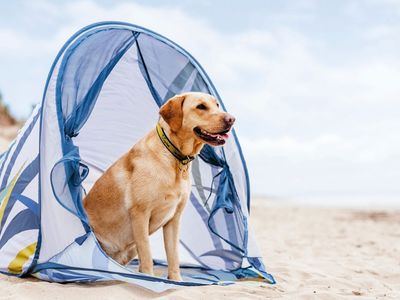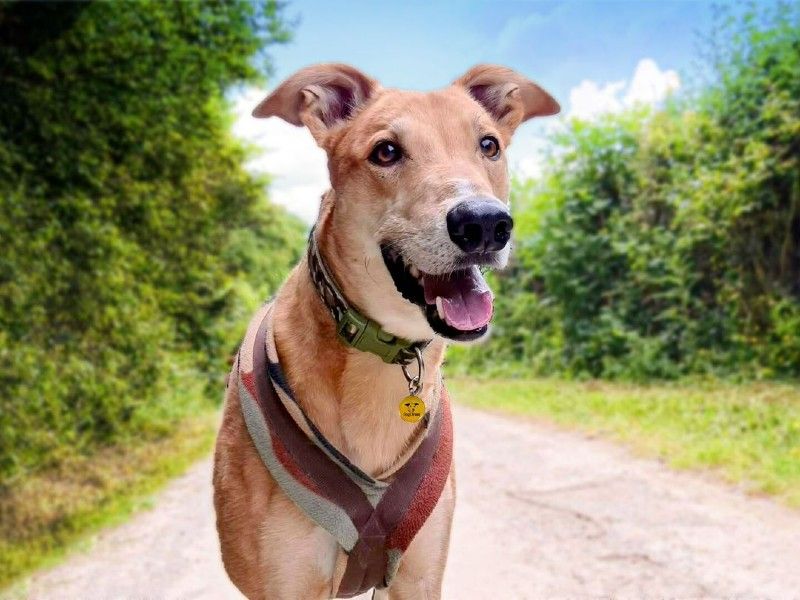
Our summer guide
Sign up to receive our summer guide. Top tips to keep your pooch happy in the hot weather.
Keep your dog happy and healthy in warm weather with our advice for safe fun in the sun.


Sign up to receive our summer guide. Top tips to keep your pooch happy in the hot weather.
There's no simple answer. Your dog could overheat even in winter.
However, if you’re considering taking your pal out in warmer weather, here are a couple of things to keep in mind.
Getting too hot can be really risky for our four-legged friends. They can’t sweat (except through their paws), so they rely on panting as their main way to get rid of heat. Panting is less efficient than sweating, especially when it is humid.
Heat related illness is sometimes called ‘heat stress’, ‘heat exhaustion’ or ‘heatstroke’ - these terms describe increasing severity of heat related illness. You might think it’s only a problem in the summer months or during warm weather, but dogs can overheat at any temperature, and any time of year including during winter. A recent study has shown that a significant number of dogs were diagnosed with heatstroke when the temperature was only 16.9 degrees Celsius.*
Act immediately to prevent your dog’s condition getting worse. If your dog has collapsed or is struggling to breathe, call your nearest vet immediately.
Cool first, transport second. Take these steps to cool your dog down, then transport them to a vet:
Unfortunately, there isn’t a ‘one-size-fits-all' answer to this. Each dog will have their own limits depending on their breed, age, health and other factors. However, some dogs are more at risk than others.
One of the risks of overheating is heatstroke. Heatstroke can affect any type of dog, but certain breeds and types of dogs are at increased risk:
According to research (from the VetCompass Programme at the Royal Veterinary College (RVC) in collaboration with Nottingham Trent University), Bulldogs are fourteen times more likely to suffer heat-related illness compared to Labrador Retrievers.** Over a third of owners of flat-faced dogs reported that heat regulation is a problem for their pet.***
We need to learn the signs of heatstroke and look out for these in our dogs to help them take a rest and cool down when they need to. Some dogs aren’t good at self-regulating and may continue to run and play even though they’re hot and tired, which increases their risk of heatstroke.
In fact, exercise is the main trigger. A recent study found that nearly 75% of cases of heat-related illness in UK dogs were because of exertion. And 67.5% of cases were just from walking only, so even moderate exercise can cause dogs to overheat.
The most common heatstroke symptoms are breathing changes (panting excessively or changes to breathing effort) and lethargy or drowsiness.
A dog could die in a hot car in just minutes. Winding a window down is not enough to help your dog stay cool.
Think twice about car trips with your dog. If you do have to travel with your dog, plan your journey. Consider travelling at cooler times of the day, identify places to take breaks and avoid congested roads or busy times of day when you could get caught in traffic.
Our simple and easy summery treat recipes will help your dog stay cool and will give you fun activity to bond with your dog.
Beaches are a wonderful place to enjoy with your dog. Before heading out, check out our beach safety tips.
And remember, some public parks and beaches may have Public Space Protection Orders or Dog Control Orders at certain times of year.
* Read the full study on: 'Risk Factors for Severe and Fatal Heat-Related Illness in UK Dogs—A VetCompass Study' by Hall, Emily J., Anne J. Carter, Guaduneth Chico, Jude Bradbury, Louise K. Gentle, Dominic Barfield, and Dan G. O’Neill. May, 2022.
** Read the full study on: 'Incidence and risk factors for heat-related illness (heatstroke) in UK dogs under primary veterinary care in 2016' by Hall, E.J., Carter, A.J. & O’Neill, D.G. June, 2020.
*** Read the full study on: 'Great expectations, inconvenient truths, and the paradoxes of the dog-owner relationship for owners of brachycephalic dogs' by Packer RMA, O'Neill DG, Fletcher F, Farnworth MJ. July, 2019.